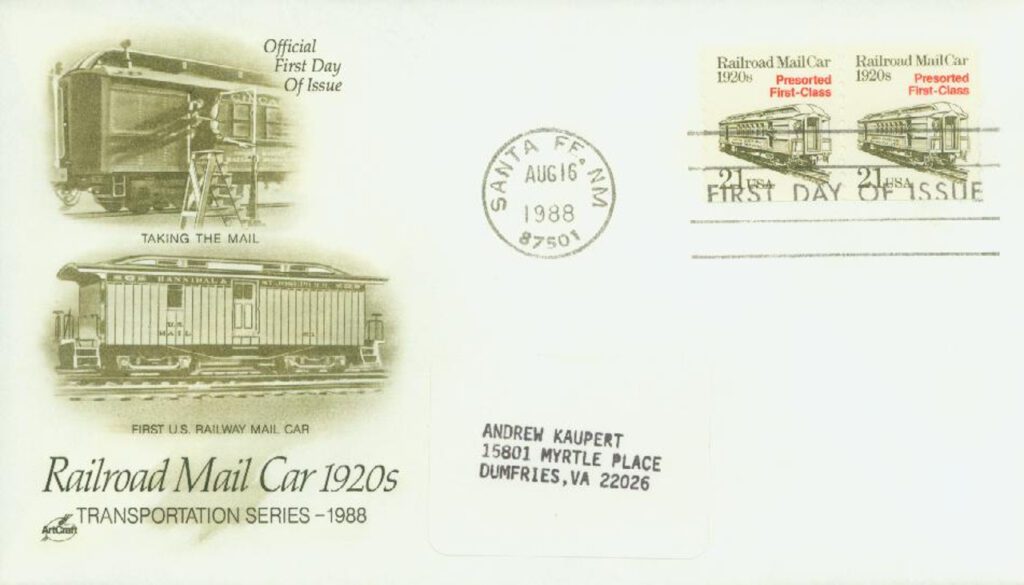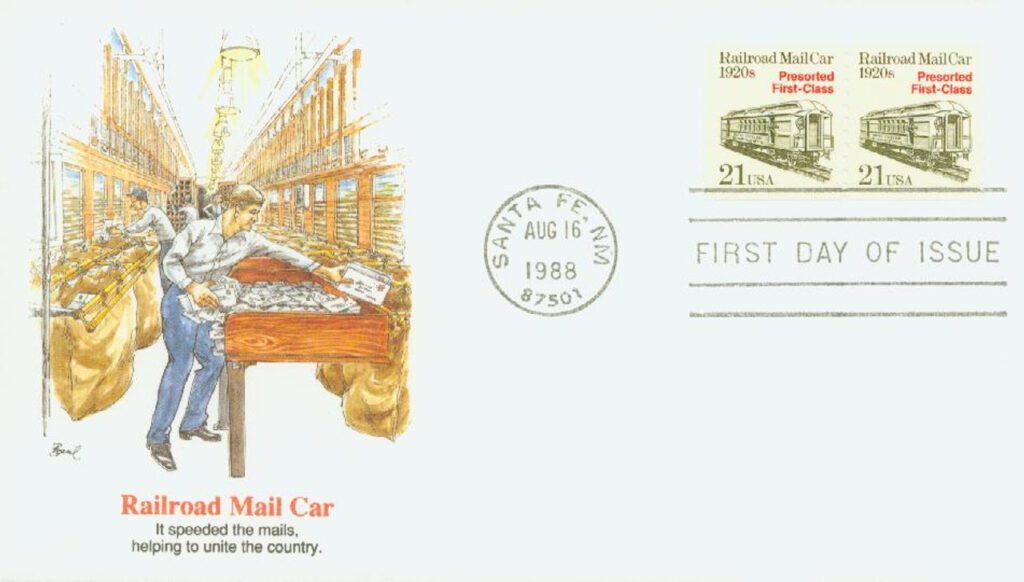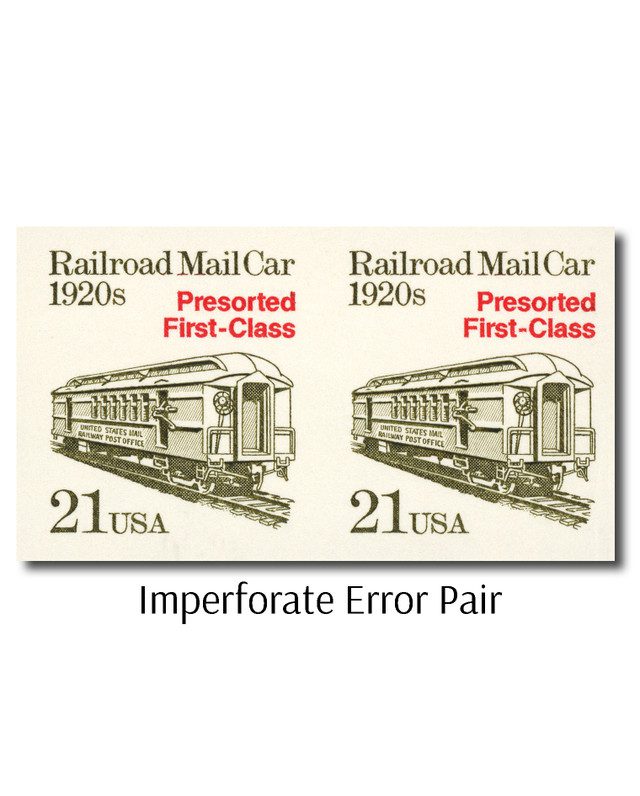On July 7, 1838, Congress approved an act that declared all United States railroads as post roads. This would lead to a dramatic increase in the use of railroads to deliver mail.
In the 1830s, businesses and individuals began to complain that mail delivery was too slow. At the time, it was carried by horse and stagecoach.
The postmaster general answered these calls by authorizing mail to be put on trains in the early 1830s. The first mail carried by train was delivered on December 5, 1832, aboard a train between Lancaster and West Chester, Pennsylvania.
The next major development came in May 1837, when John E. Kendall was made a route agent, marking the first time a clerk was appointed to accompany the mail on a railroad car. When the mail traveled on these trains, it usually sat unopened, waiting to be sorted at the local office.
To improve service, on July 7, 1838, Congress passed an act declaring all US railroads to be post roads. This act helped increase the use of railroads for mail delivery. It also led to a significant decrease in the use of post riders and horse-drawn vehicles. However, they were still used to deliver to post offices that weren’t along railway routes. In areas of the country that didn’t have railroads, contractors delivered the mail and were called star routes.
For nearly 30 years, trains were used to transport mail between post offices. The mailbags were loaded onto the trains and delivered to the post office where they were sorted. However, while some of the mail was delivered, many letters were returned to the bags and placed back on the trains to be sorted later. Several issues also arose. The post office and the railroads struggled to agree on a fixed rate for mail transported by rail. In some cases, this led to railroads refusing to deliver the mail. The post office felt the railroads were beyond their control and started to consider other options.
Soon the idea emerged to have mail clerks on the trains to sort the mail as it traveled between towns. In 1862, the idea was briefly tested on the Hannibal and St. Joseph line in Missouri. Then two years later, Chicago’s Assistant Postmaster George B. Armstrong pushed for the widespread use of a railway post office and succeeded. The first mail car, a renovated baggage car, ran on the Chicago and North Western Railroad line between Chicago and Clinton, Iowa, on August 28, 1864.
Clerks aboard the train sorted mail not just for routes along the line, but also for those beyond the end of the line. This new railway mail service proved a great success. More mail cars were added to travel between New York and Washington, New York, and Erie, Pennsylvania, as well as between Chicago and Burlington, Illinois, and Chicago and Rock Island, Illinois.
These trains didn’t always stop at every station, but those smaller stations still had mail. Early on, the trains had to slow down so the clerks could grab the mailbags, which was both inefficient and dangerous. Eventually, they developed mail cranes. Mailbags were hung on a crane at stations that were too small for the train to stop. The clerk used a metal mar to grab the bag as the train passed at about 70 miles per hour.
By 1867, there were 18 railway mail routes that crossed over 4,435 miles of track with 160 clerks hard at work. They were so efficient that dozens of clerks at stationary post offices were fired or moved to other jobs because they were no longer needed to sort the mail. The clerks took great pride in their work and could sort up to 600 pieces of mail an hour, and up until the mid-1900s, railway mail service dominated the movement of the mail.
However, as airplanes and highways expanded and improved, the need for railway mail began to decline. Postal officials also began to move toward mechanical processing. On June 30, 1977, the very last railway mail car ended its final run when it pulled into Washington’s Union Station.
| FREE printable This Day in History album pages Download a PDF of today’s article. Get a binder or other supplies to create your This Day in History album. |
Discover what else happened on This Day in History.








I think Amtrak could still be used to move some mail such a packages. Why Not??? It would help the financing and many post offices are still near rail lines. The private rail lines could be offered the option also.
Maybe then Amtrack would be a little less in the red year after year.
But the Post Office would continue in the red
It would be interesting to know how many bags of mail were strewn across the depot areas because of clerk errors, malfunctions, etc.
Amtrak used a train known as Fast Mail on its Northeast Corridor mainline between Boston and DC and even up to Springfield, MA via Connecticut.
Trains were numbered #12 (northbound) and 13 (southbound). Train 12 carried both passengers and mail while train 13 carried mail and freight only.
At New Haven a separate train ran to and from Springfield (412/413). Train 12 departed Washington daily at 3:00am while 13 departed Springfield/Boston in the early morning. In 2002, train 13 was canceled and 12 became 190, without mail and express service.
On November 23, 1996, the northbound Fast Mail derailed on the Portal Bridge near New York City, sideswiping the southbound Carolinian and causing 43 injuries.
Railway mail service provided by Amtrak ultimately ended in 2005.
The Oil Creek and Titusville Railroad in Titusville Pa has a Post Office .Be sure to bring your address book – you can mail a postcard or letter right on the train. Each piece of mail receives an official USPS OC&T hand stamp